Direct fuel injection has become the standard injection system in the last decade. The N20/26 engine's in the BMW F30, F31, and F32 four-cylinder models use this injection system, giving them excellent fuel mileage with plenty of power. Unlike the traditional port fuel injection, the direct injection system on the N20/26 uses a high-pressure and low-pressure pump. The low-pressure pump feeds the fuel to the high-pressure pump, while the high sends the fuel to the injectors.
When replacing the high-pressure fuel pump, you may need to do some wiring. The early N20/26 engines use a pump with a different fuel quantity control valve than the later engines. The new valve on the new pump uses a different plug and connector for the wiring harness. Follow along carefully below to ensure you don't miss a step or wire the pump incorrectly.
BMW models and years applicable:
|
|
|
|
|
|
|
|
Symptoms of a failing BMW F30 high-pressure fuel pump:
- Delayed engine start
- Engine hesitation while accelerating
- Poor gas mileage
- High engine temperatures
A failing high-pressure pump is going to make your BMW difficult to drive. This fuel pump sends the fuel to the injectors at the pressure required to spray the fuel into the engine. When the pump begins to fail, the injectors won't have a consistent fuel supply, causing sub-par engine performance.
What will it cost to replace the high-pressure fuel pump on an N20/N26 powered BMW F30?
Our high-pressure fuel pump kit comes with the updated pump and the new connector required for it. The kit will cost you right around $300. You don't need to spend any money on special installation tools, so the kit is all you need to purchase.
How long will it take to replace the high-pressure fuel pump on an N20/N26 powered BMW F30?
The most time-consuming part of the job is getting to the pump. You need to remove several plastic covers from the engine bay just to be able to access the fuel lines and pump. Once you get to it, however, the replacement is straightforward. Set aside an hour and a half to complete the fuel pump replacement.
Parts required to replace the high-pressure fuel pump on an N20/N26 powered BMW F30:
Tools required to replace the high-pressure fuel pump on an N20/N26 powered BMW F30:
- E6 Socket
- E18 Socket
- 10mm Socket
- 17mm Wrench
- Picks
- Ratchets
- Ratchet Extensions
- Torque Wrench
- Rags
- Rivet Pliers
- Wire Stripper
- Wire Cutter
- Butt Connectors
- Heat Shrink
- Assembly Lube
Steps required to replace the high-pressure fuel pump on an N20/N26 powered BMW F30:
Step 1: Expose the fuel pump
Grip the front of the engine cover and pull up to pop it off of the front locating pins. Then grab it by the right side and pull up to pop it off of the last pin. The pre-2013 engines also have two vacuum lines on the passenger's side of the cover that needs to be disconnected before you can remove the cover.
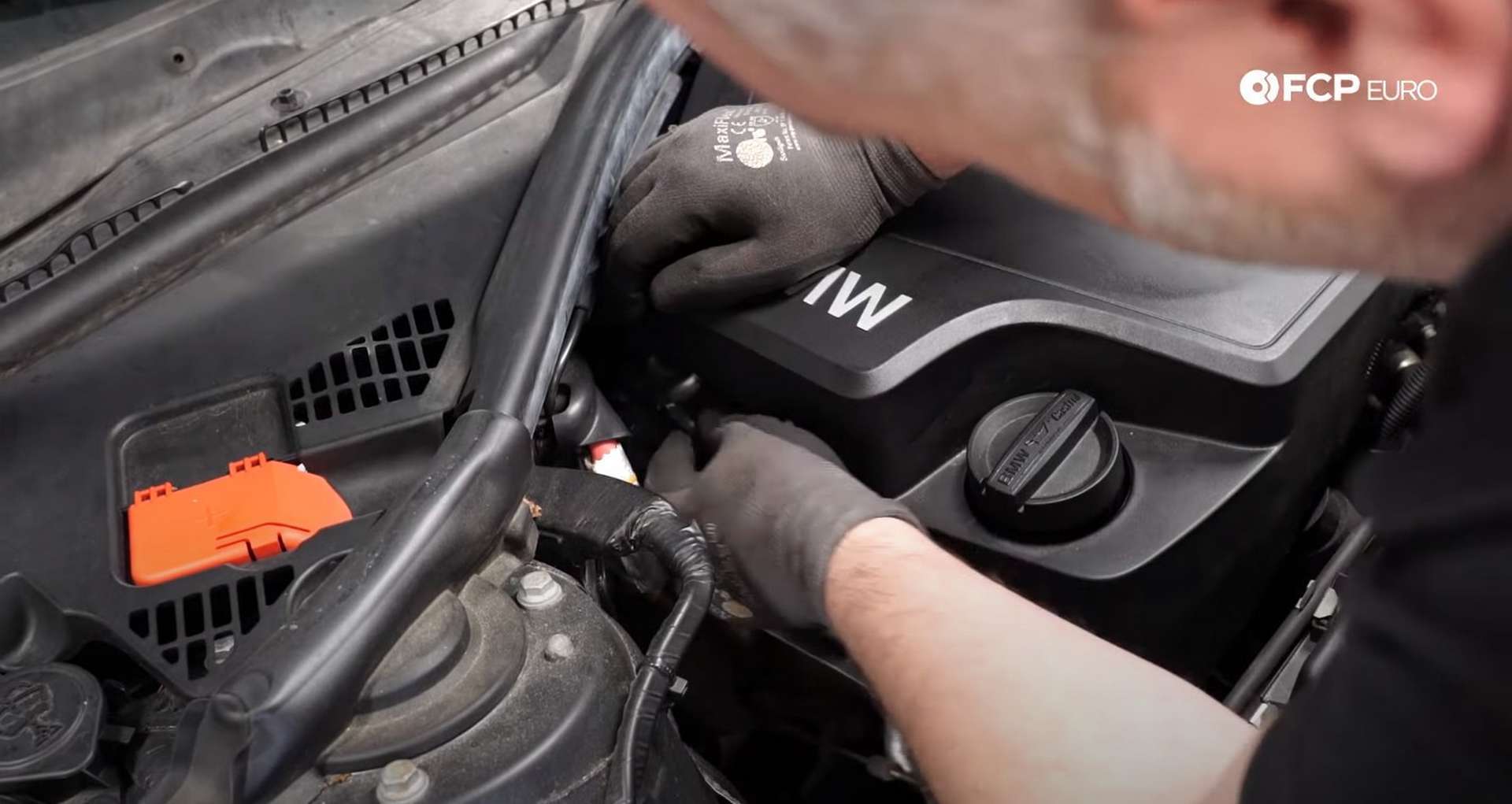
Underneath the plastic engine-cover is a foam noise-reduction pad. Pull up on it to remove it from the engine. Then move to the engine cowl. Use a 10mm socket to rotate the fasteners at the back of the cowl, a quarter turn. Then, remove the plastic rivets, securing them near the fenders.
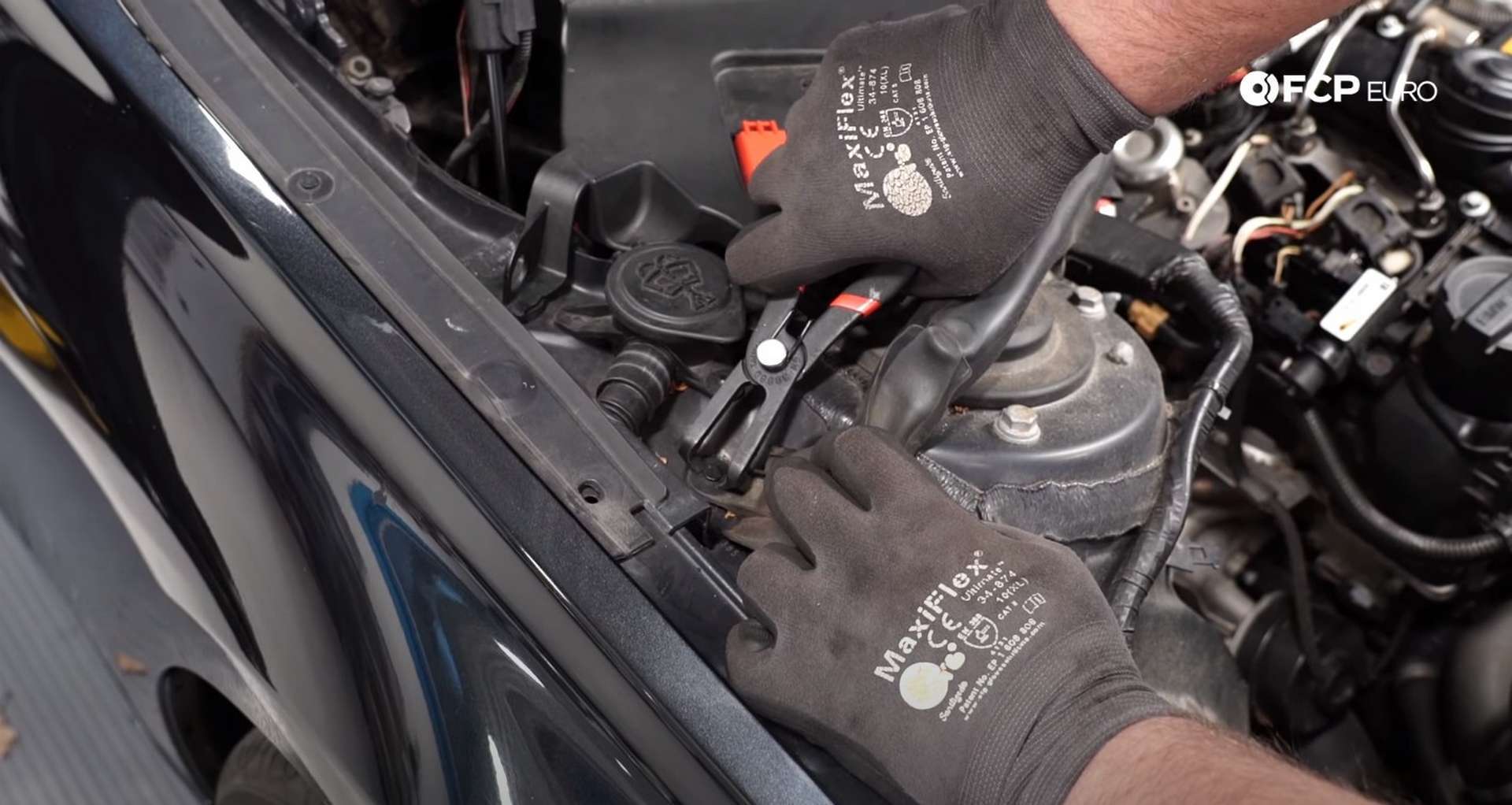

Removing those forward cowl pieces exposes the strut brace. Remove the two plugs from the rear cowl's center to reveal the strut brace's firewall mounting bolts. Then, pull the rubber strut covers off and remove the bolts with an E18 socket and pull the brace out. You need to remove a plastic rivet to remove each strut cover.
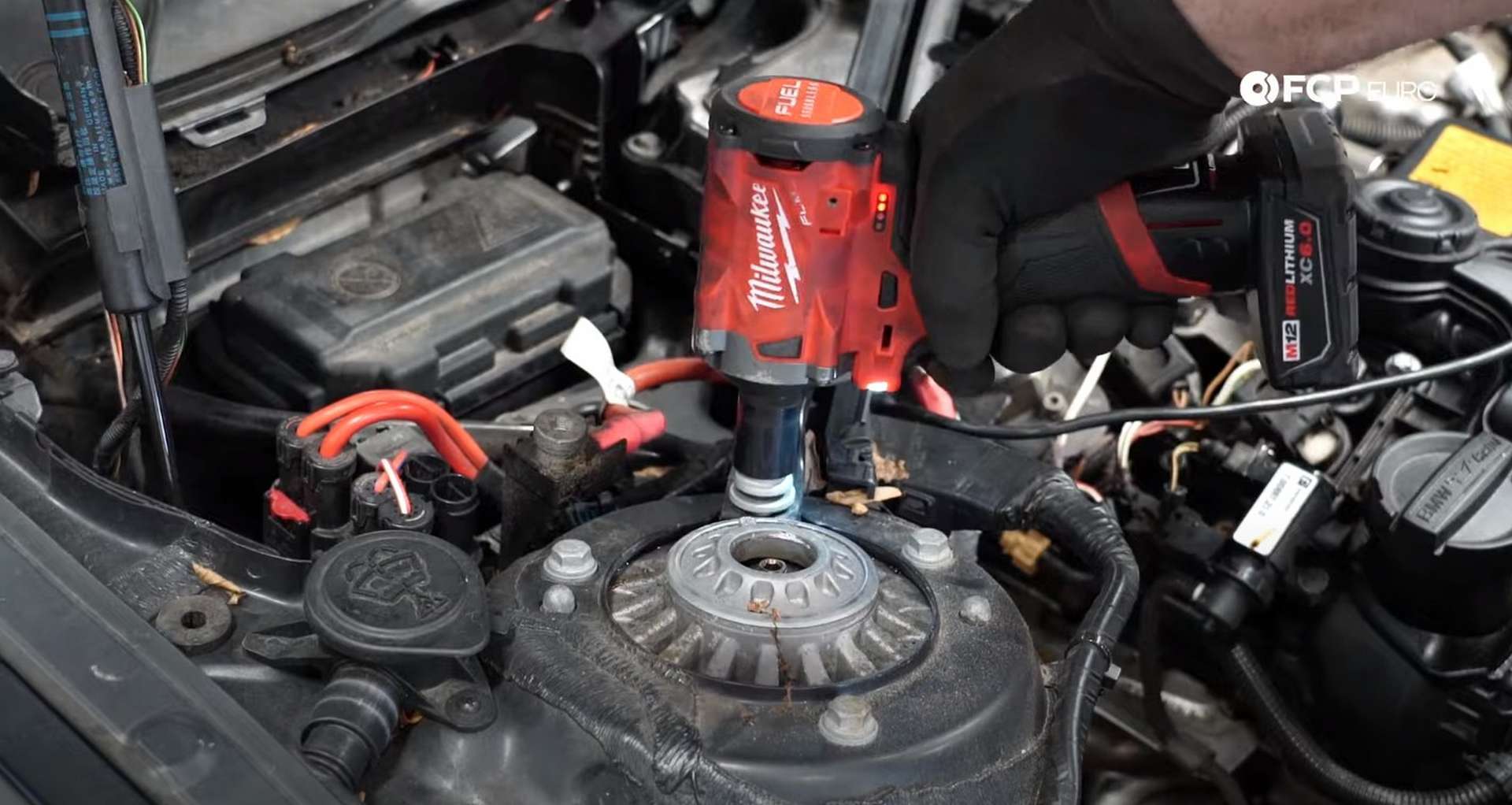
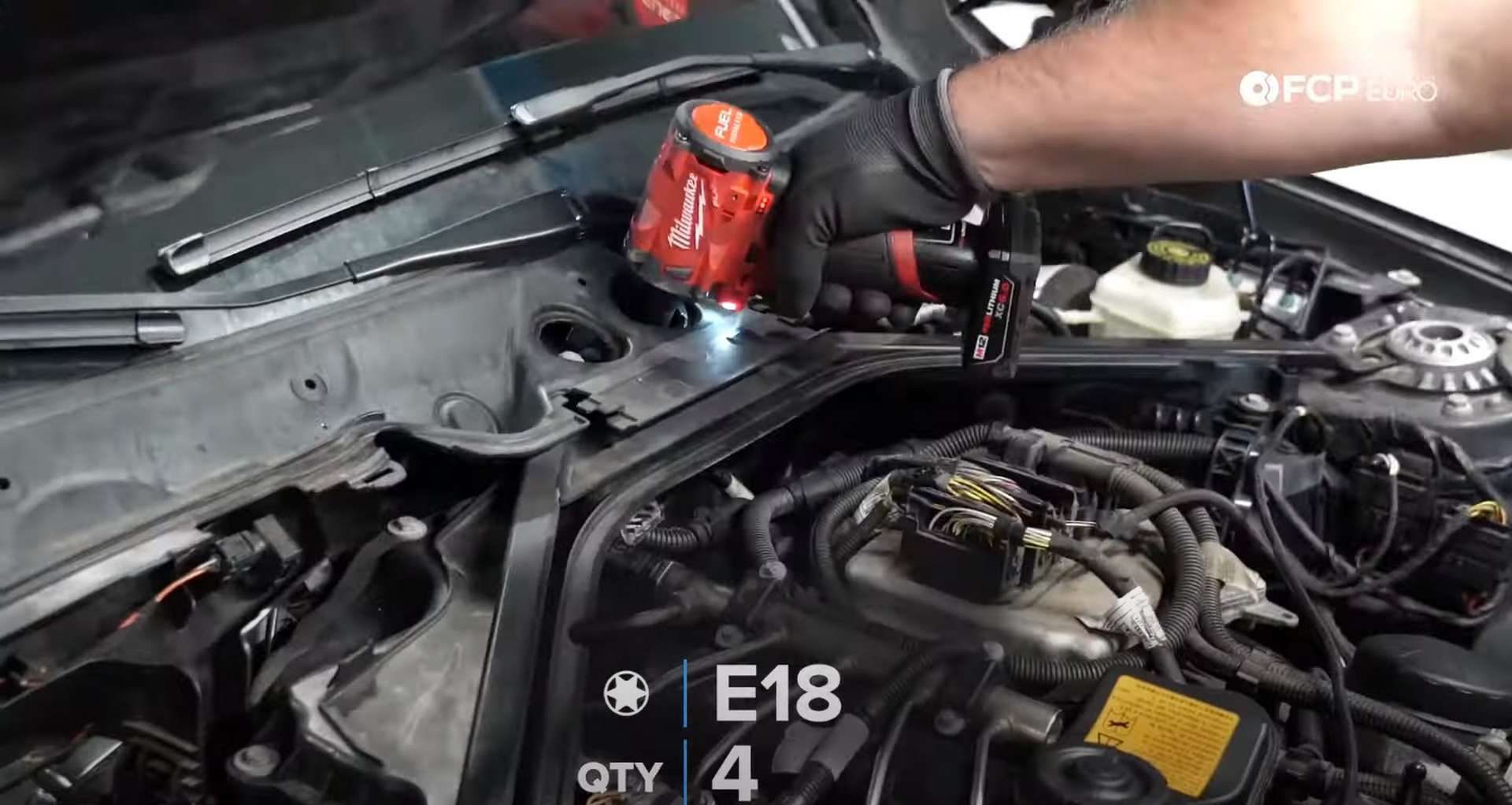
After that, remove the cover that sits below the brace. Use a 10mm socket to remove its seven bolts.
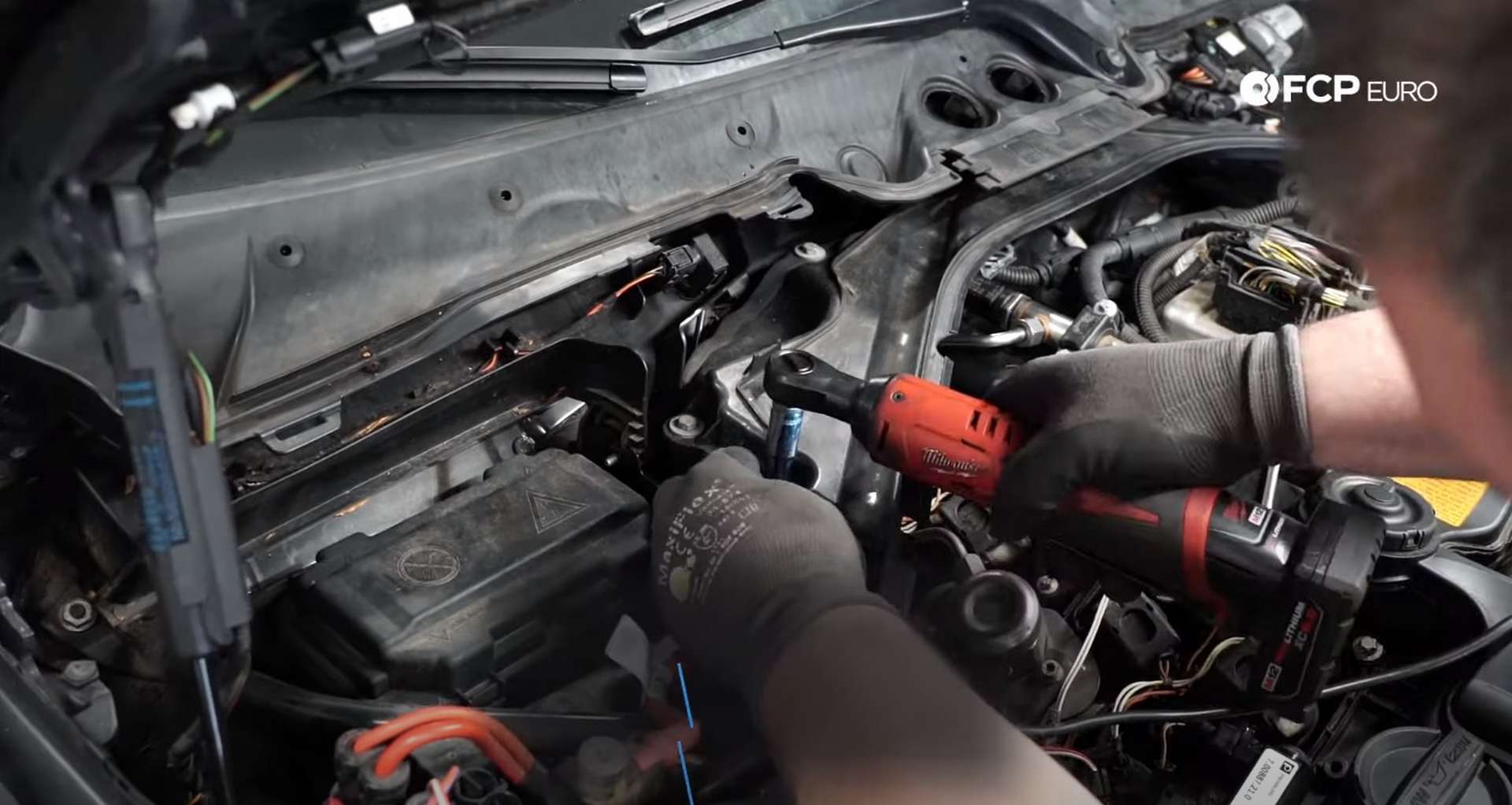
Step 2: Disconnect the fuel system
Use a 17mm wrench, disconnect the high-pressure feed line from the pump to the rail. Grab a rag or six as there is fuel in these lines, and it is under pressure. Then follow that line back to the rail and disconnect it there, too, using the same 17mm wrench.
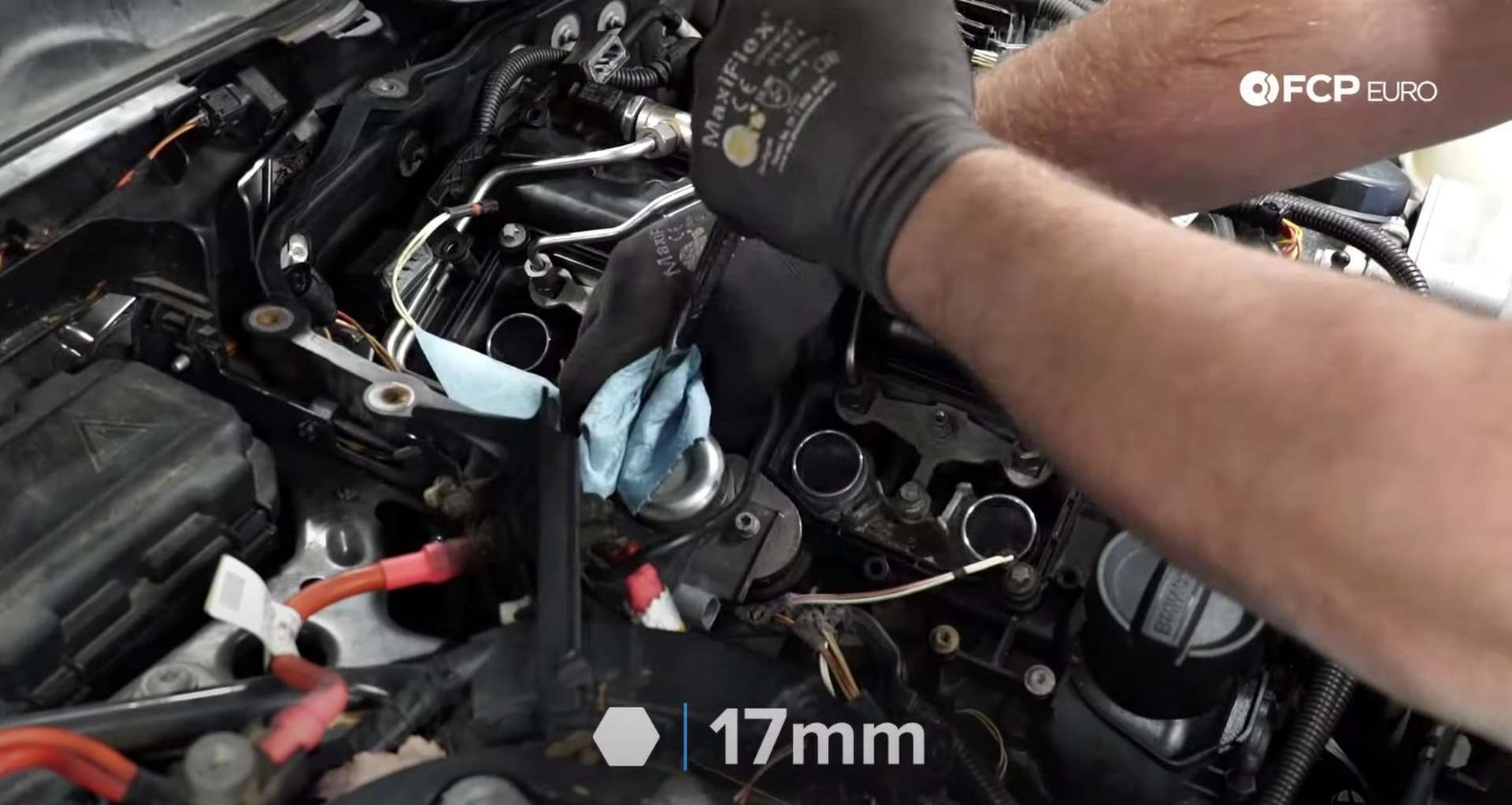
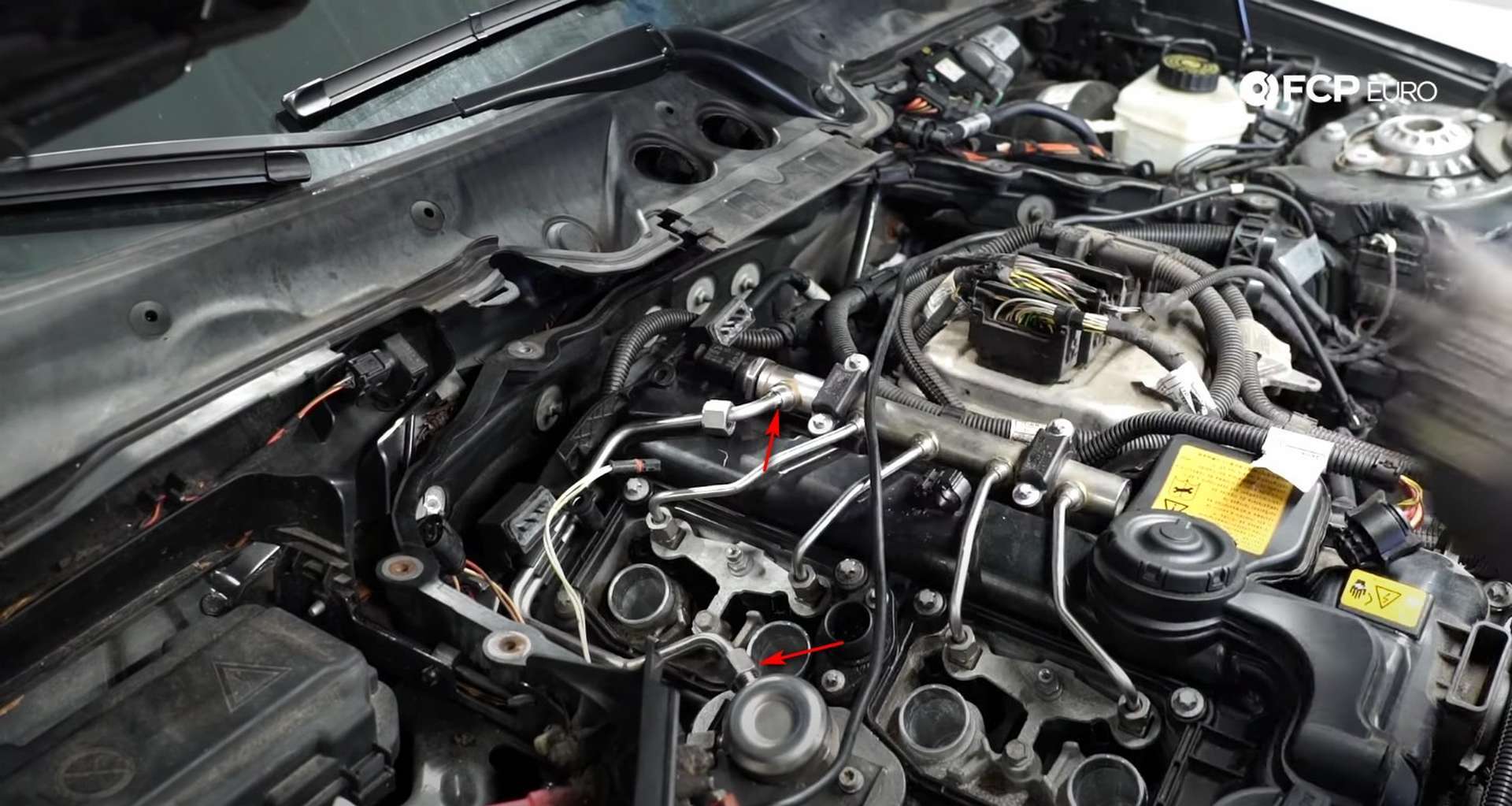
From this point, until you reconnect the fuel lines, do not open the car's doors. Doing so will prime the fuel system, causing high-pressure fuel to be sprayed all over the engine bay. If you need to open the door with the lines disconnected, disconnect the battery.
You have to disconnect a bracket to remove the fuel hardline. Use an E6 socket to remove the bolts and then push the bracket back and out of the way.
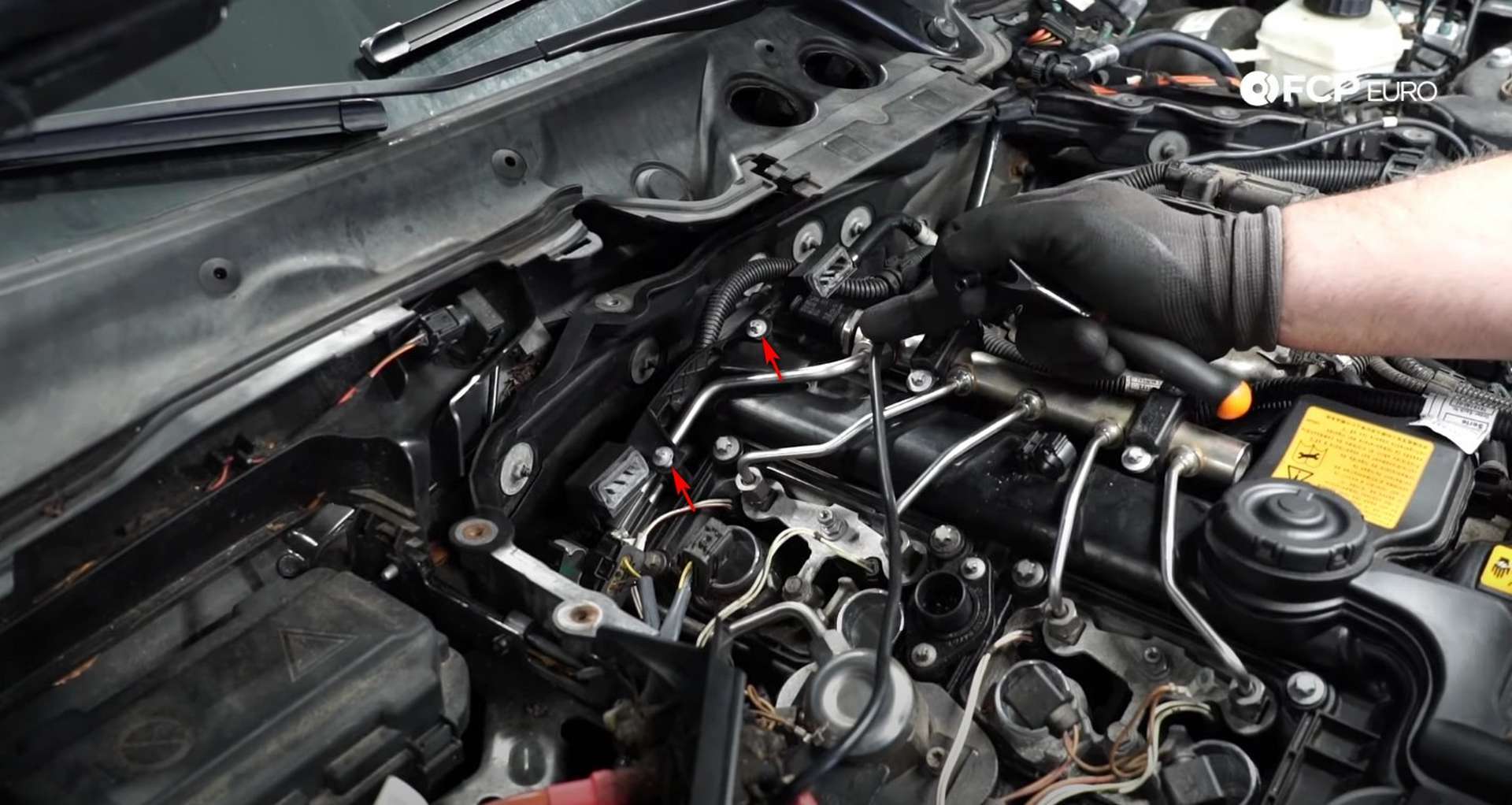
Remove the high-pressure line from the engine. Then, disconnect the low-pressure line that runs below the high-pressure line with a 17mm wrench and unplug the pump's electrical connection.
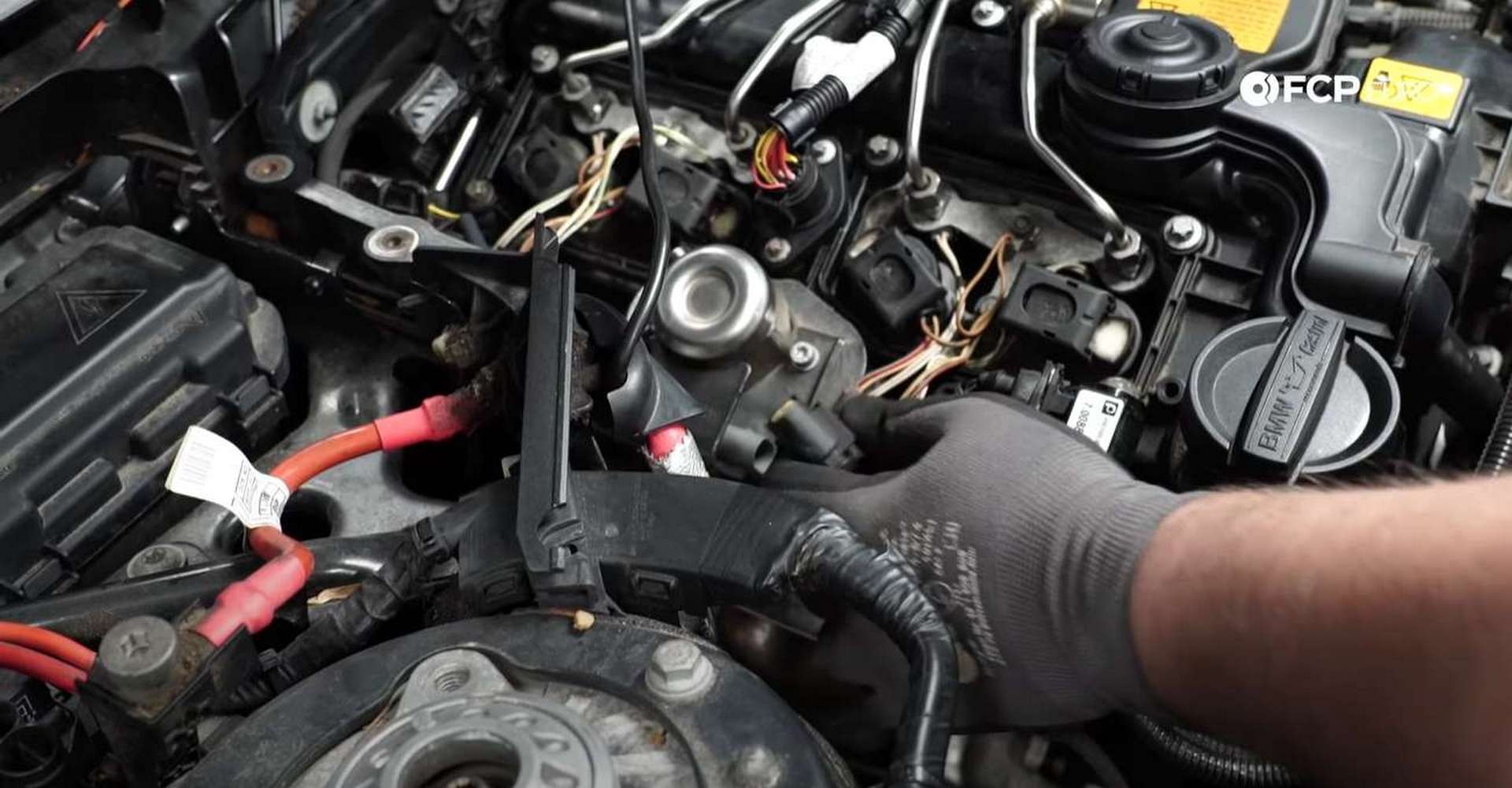
Step 3: Replace the high-pressure fuel pump
Use a T30 socket to remove the fuel pump's mounting bolts. Go back and forth, walking the bolts out slowly so that the pump doesn't get pushed out crooked by the cam follower underneath it.
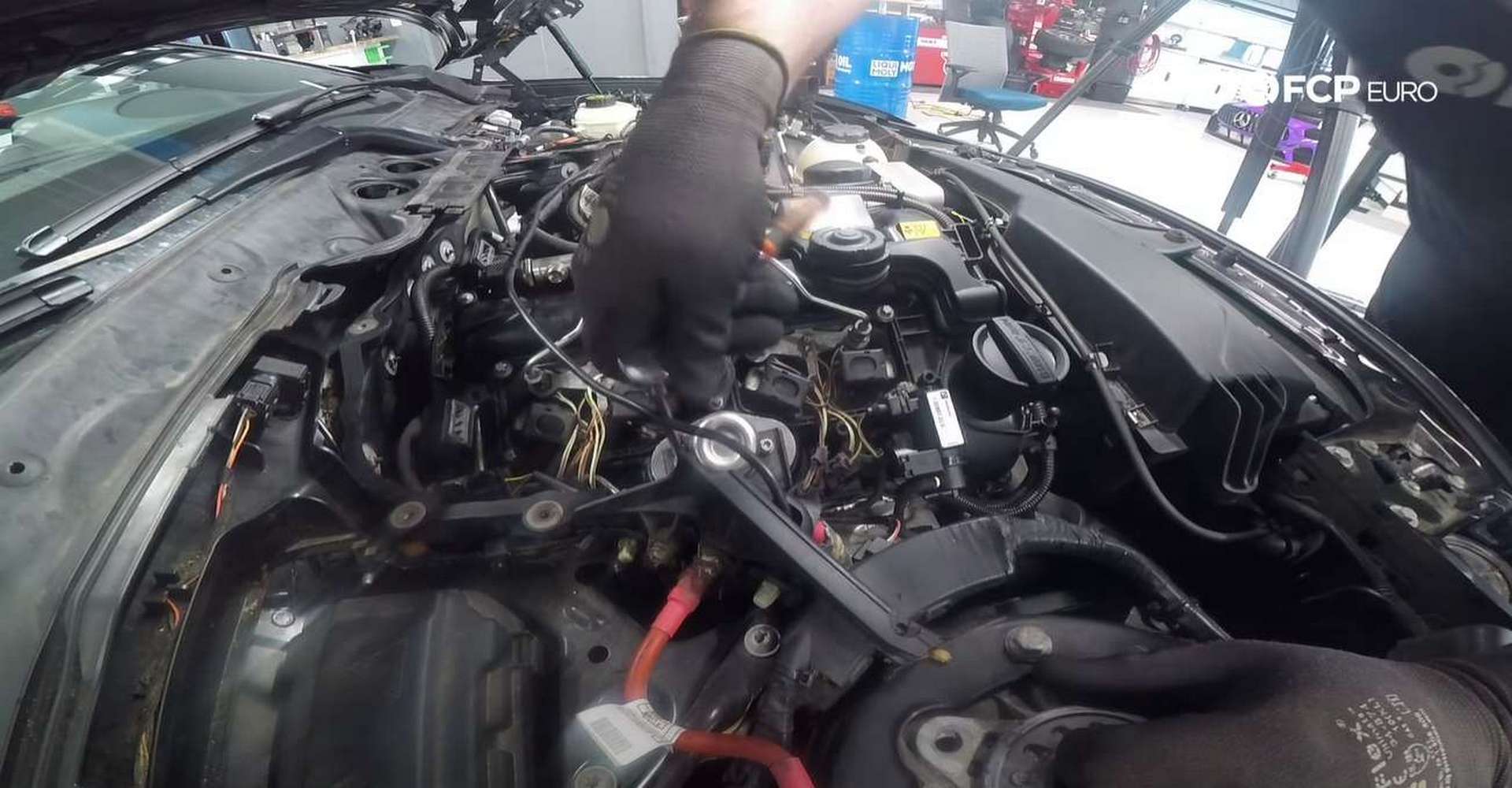
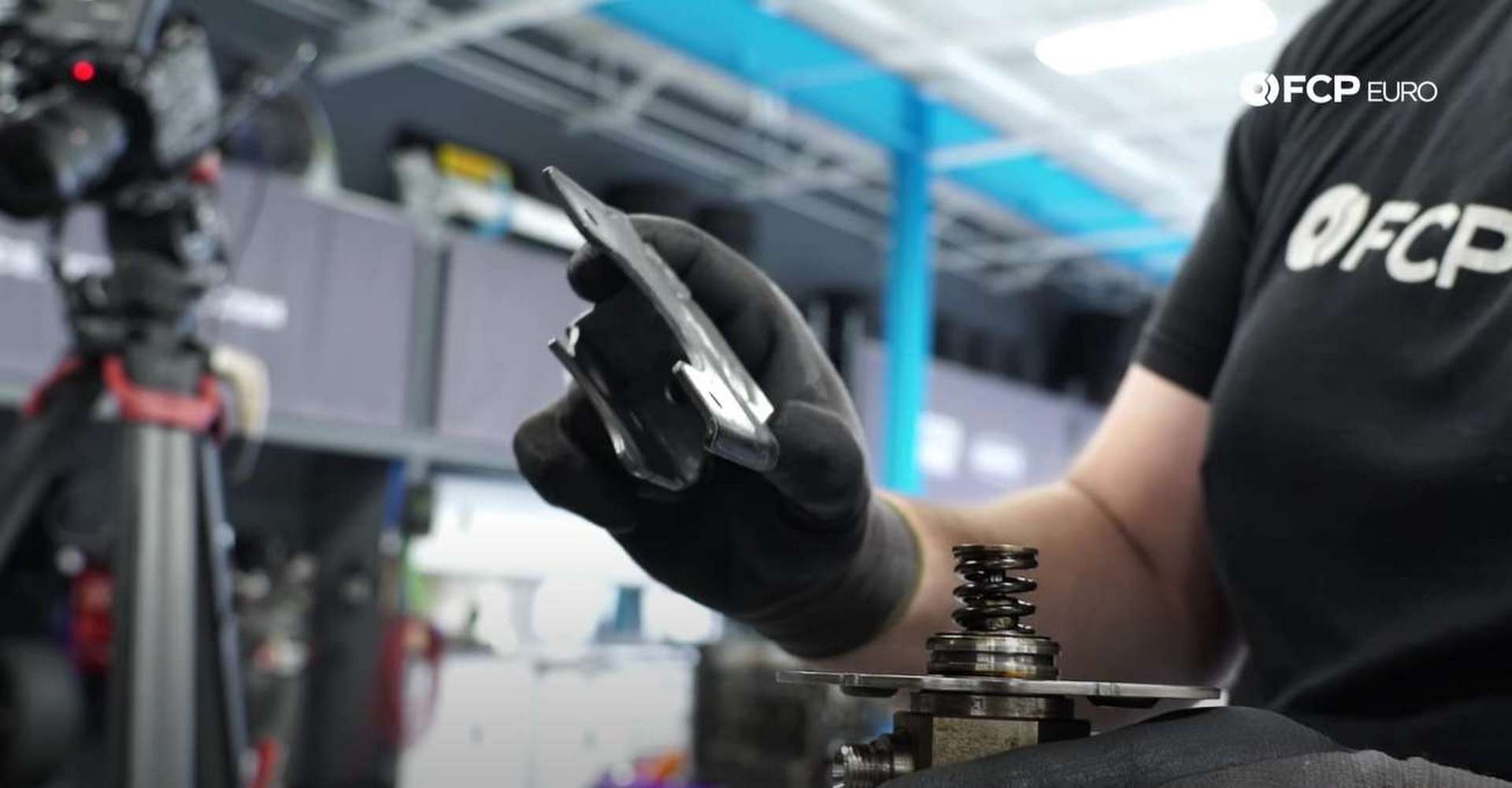
Hang onto the bracket attached to the fuel pump. Then, use a pick to remove the old gasket and a magnet to remove the old cam follower.
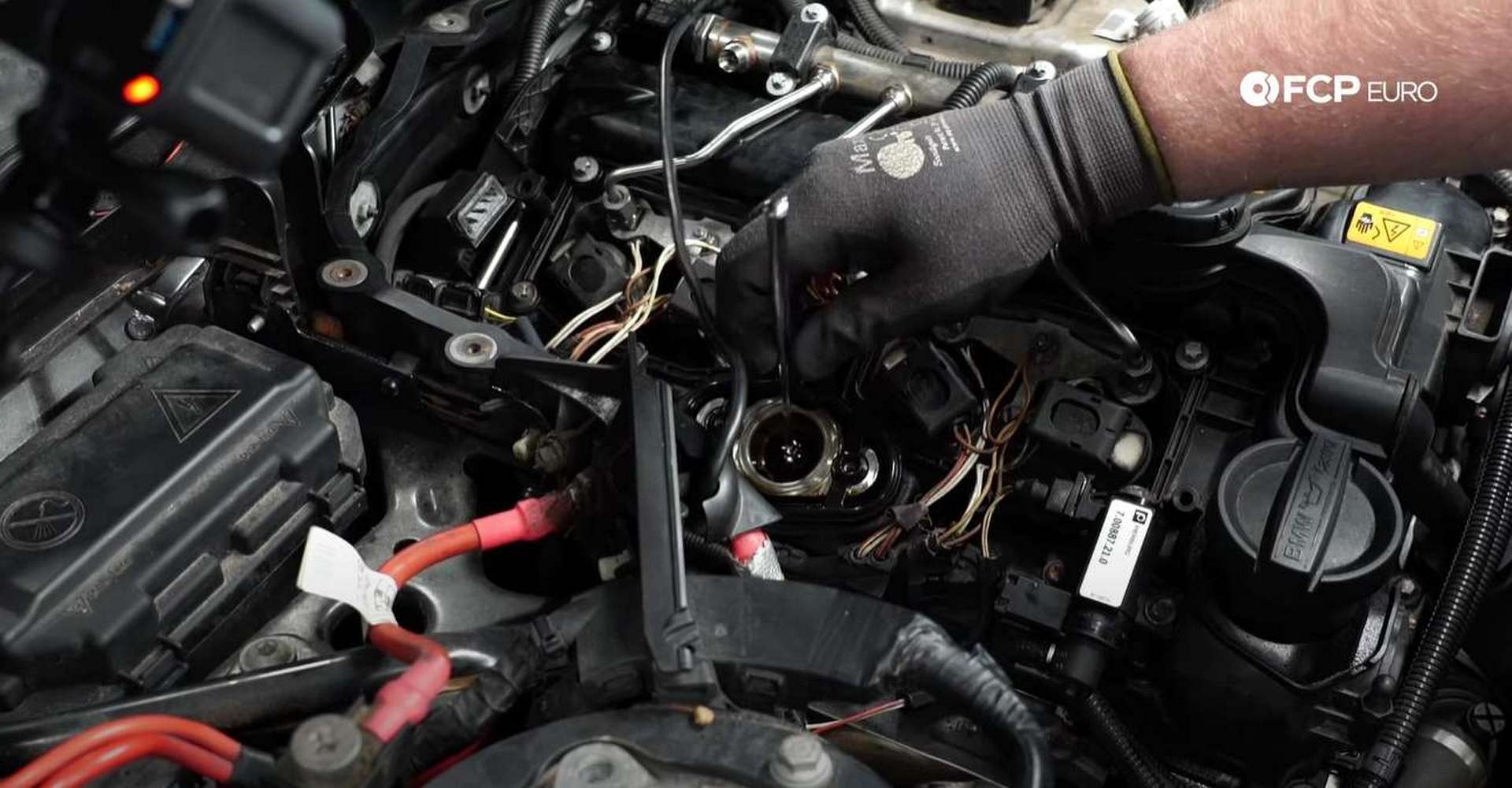
Since the N20/26s debuted, BMW has updated the fuel quantity valve on the fuel pump. The new valve uses a different plug, so you need to clip the plug on your old harness and solder on the new one. Depending on your model year, however, you may not need to do this. Compare the fuel pumps before clipping anything.
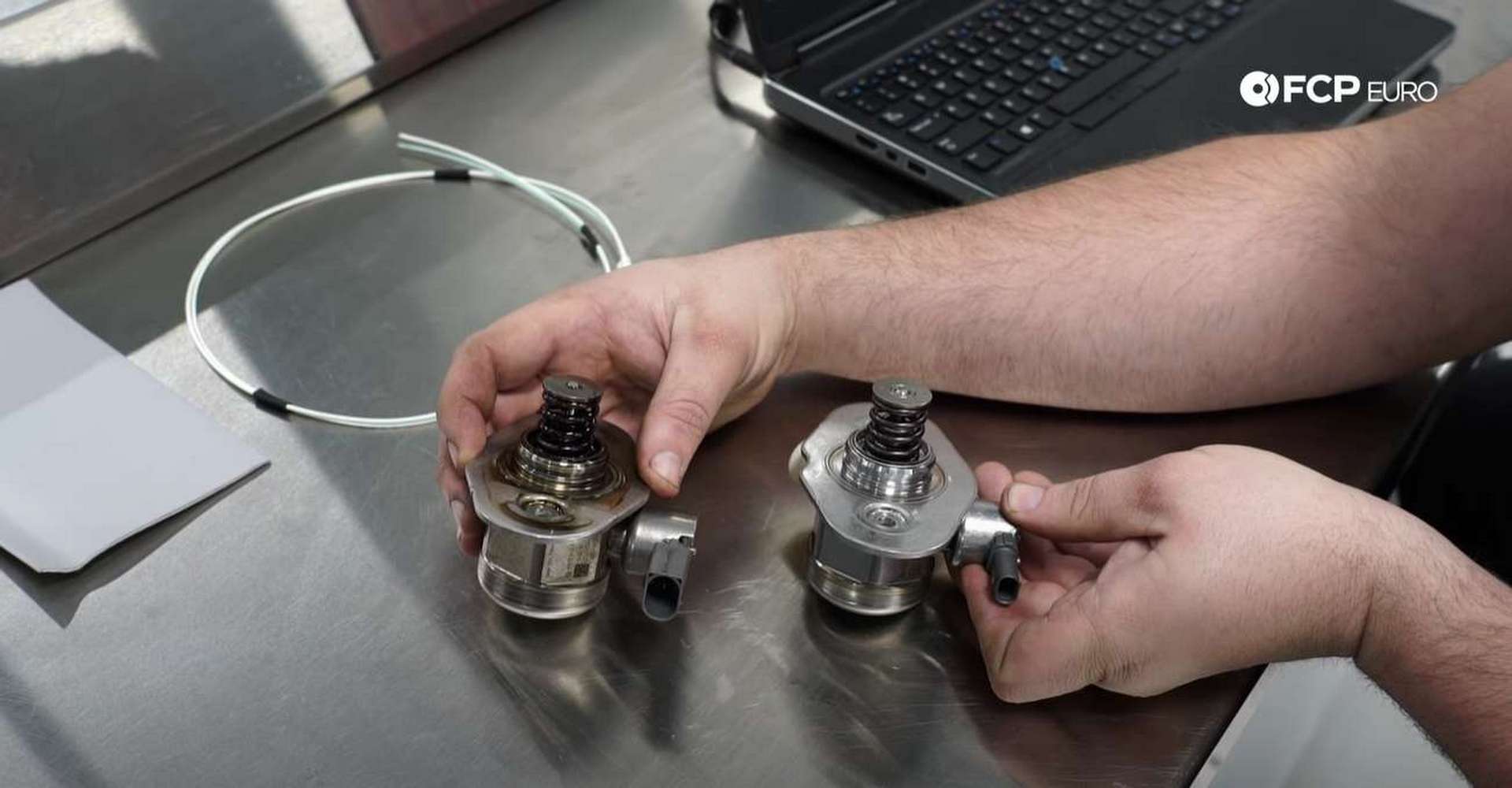
Clip the old plug off of the harness in the engine bay and crimp on the new connector. Clip the excess harness off of the new plug before attaching it to the engine harness. Slide some shrink tubing onto each wire, then connect the white with green stripe to the red wire and connect the white wire to the white wire.
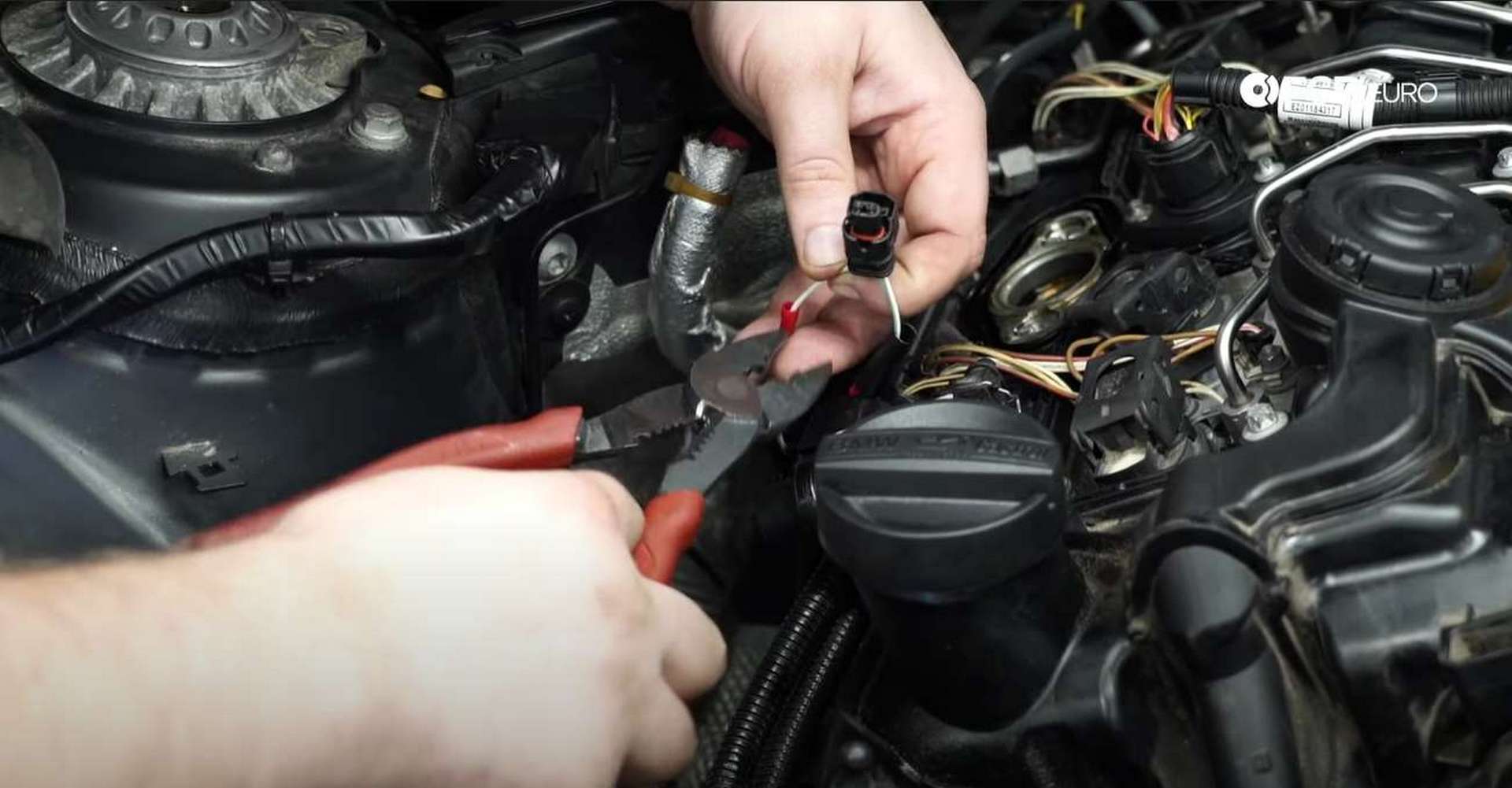
Use a lighter or heat gun to shrink the tubing onto the connections. Then, install the new cam follower. Dip the follower in some oil or apply assembly lube to it before setting it into the cylinder head. The follower will also only go into the head one way, with the notch facing down. After that, press the new fuel pump gasket into place.
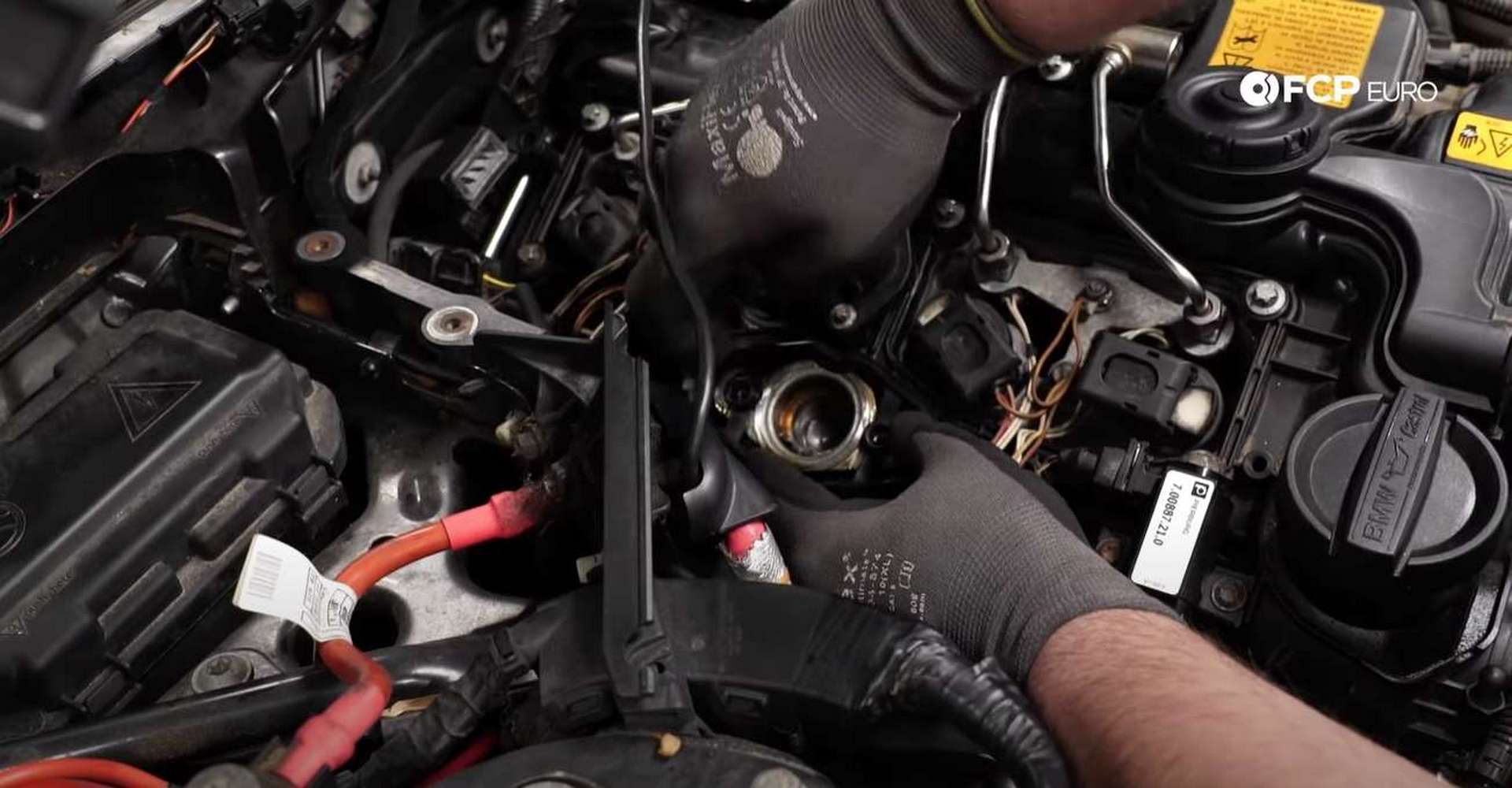
Now, slide the bracket from the old pump onto the new one and install them onto the engine. Hold the fuel pump in place while you thread in both mounting bolts by hand. Use a T30 socket to walk the bolts into the head evenly until they are tight.
Next, reconnect the fuel lines to the pump. Thread on the low-pressure line before bringing the new high-pressure line onto the engine. Then, connect the new line to the fuel rail and the fuel pump.
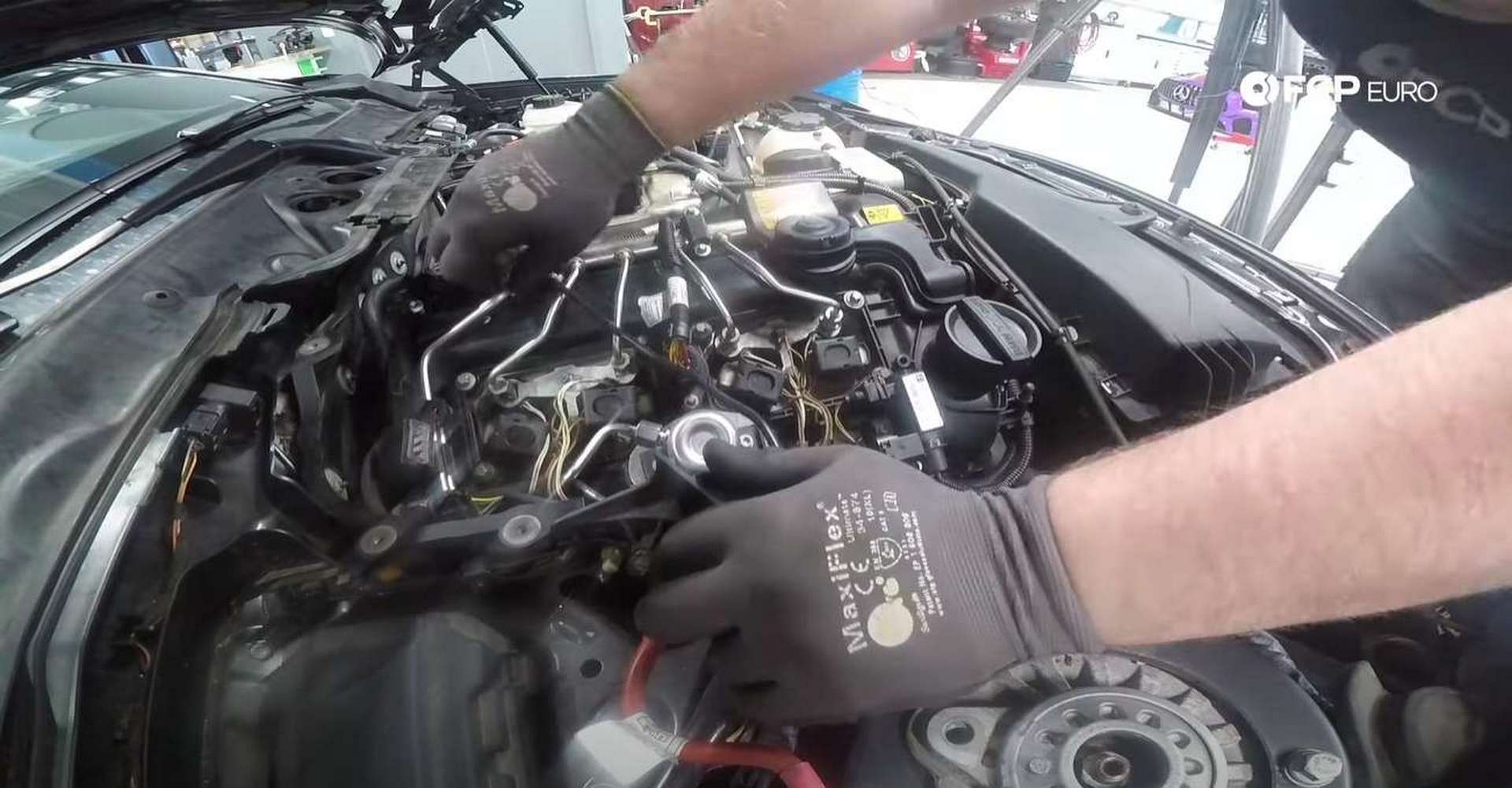
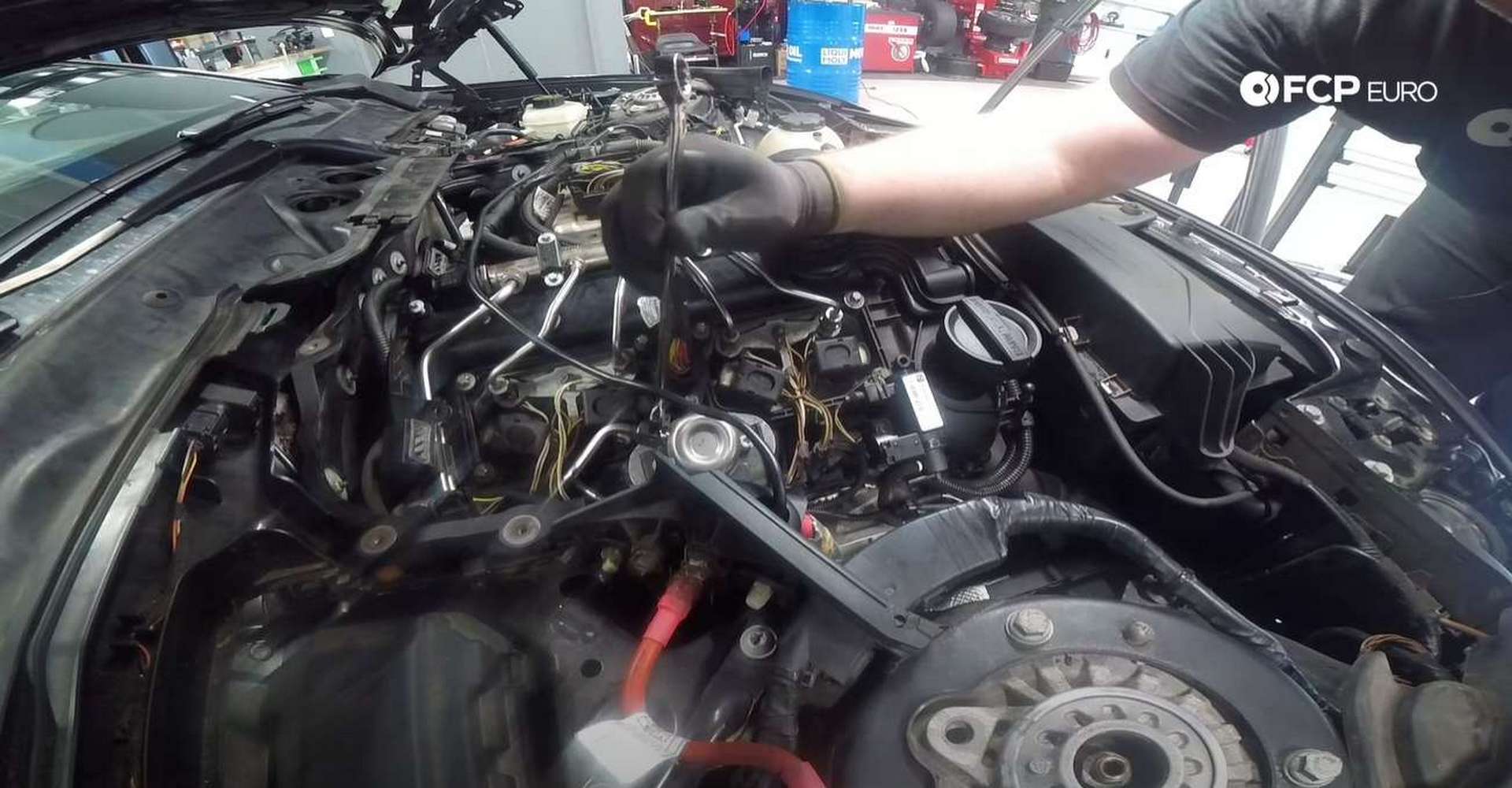
Use a 17mm wrench to tighten all of the fuel line fittings. Then, use a T30 socket to torque the fuel pump bolts to 12Nm. Now that everything is tight, refit the bracket over the fuel lines too. Use an E6 socket to tighten its two bolts.
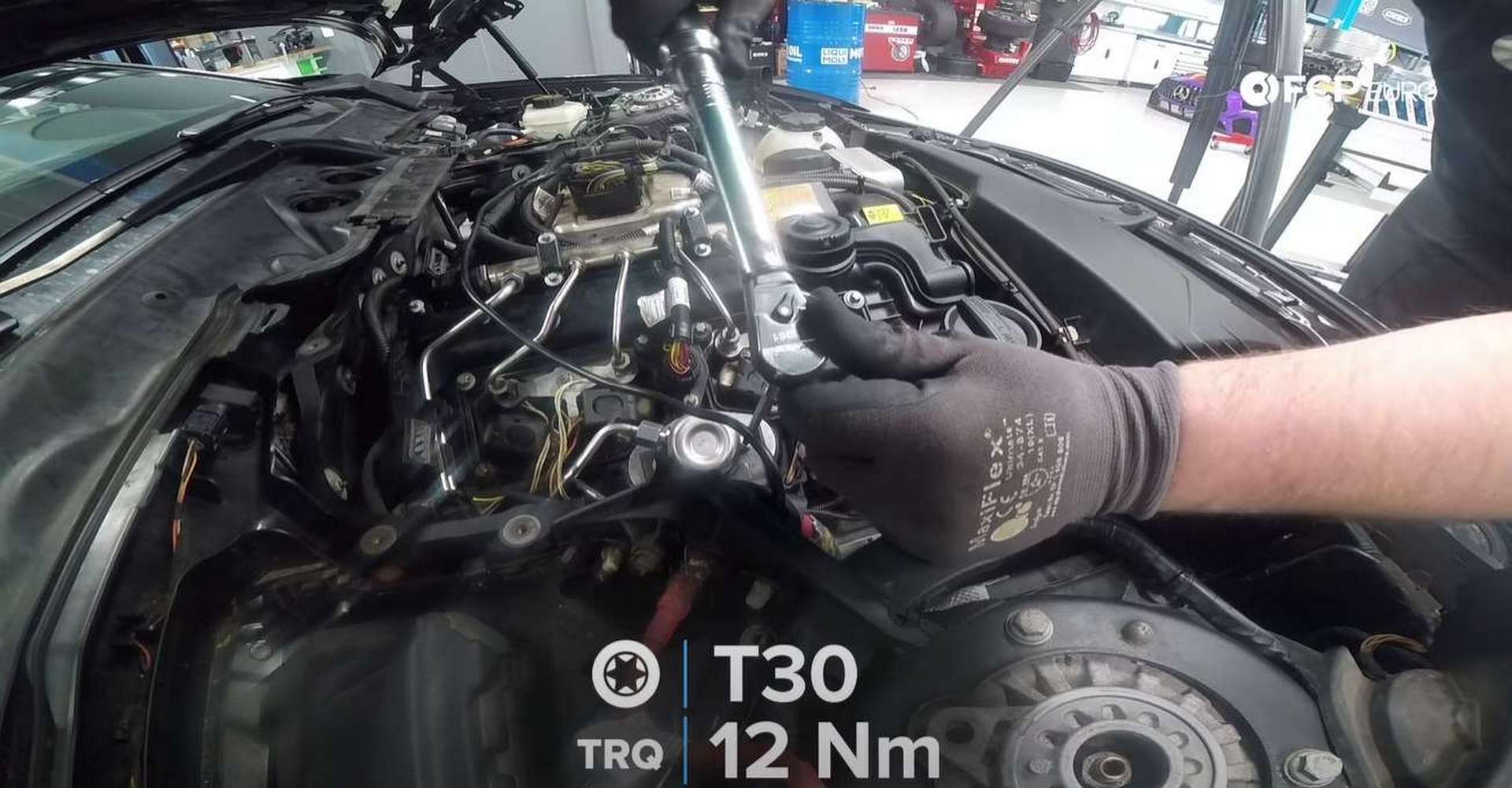
Lastly, plug the new wiring harness connector into the new fuel pump.
Step 4: Refit the engine bay plastics
First up, refit the noise insulation pad back to the valve cover. Slide it under the two tabs at the back for the engine cover, and then press the rest into place.
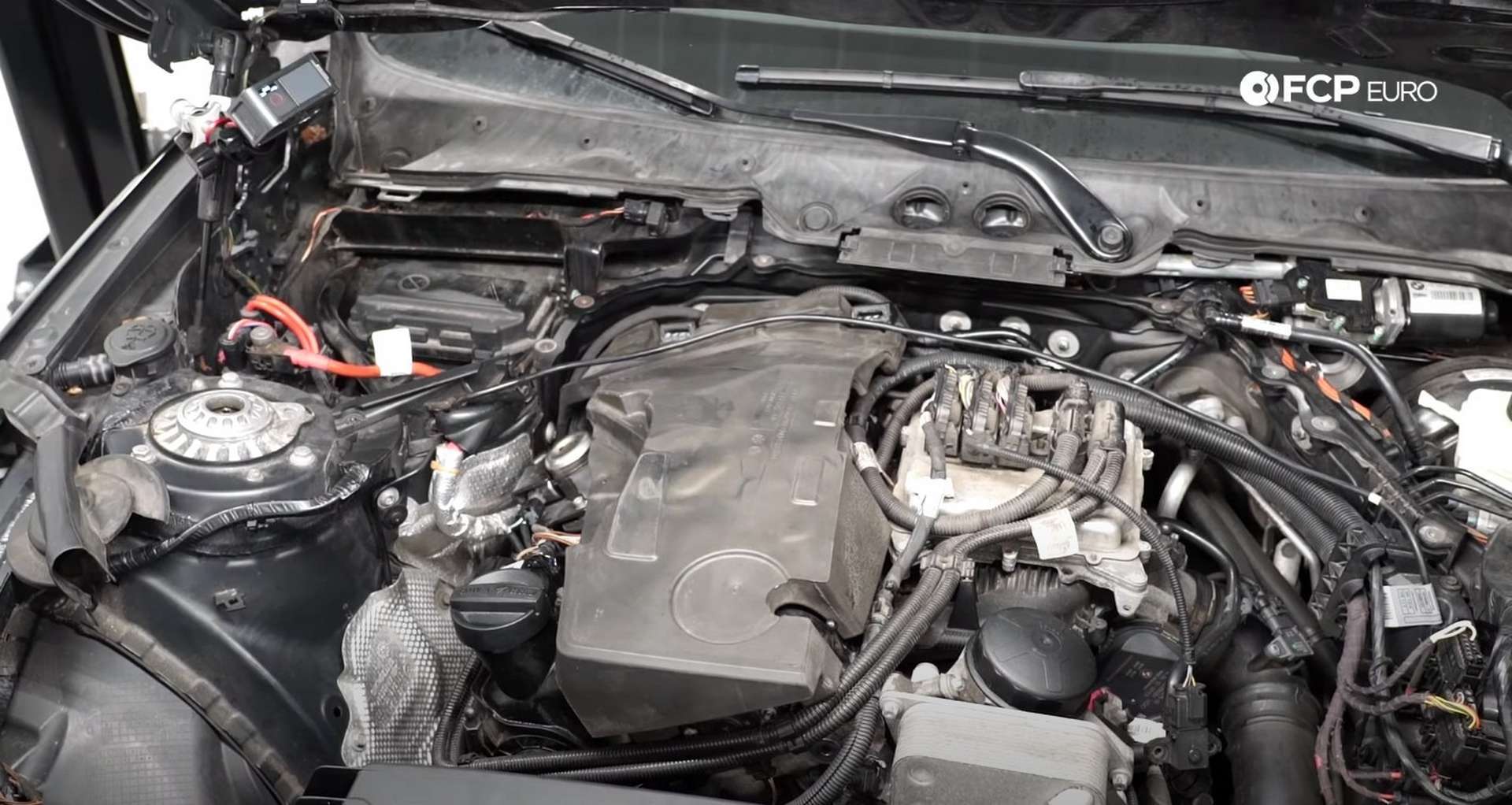
Then, refit the lower cowl piece. Thread in its seven fasteners by hand before using a 10mm socket to tighten them.
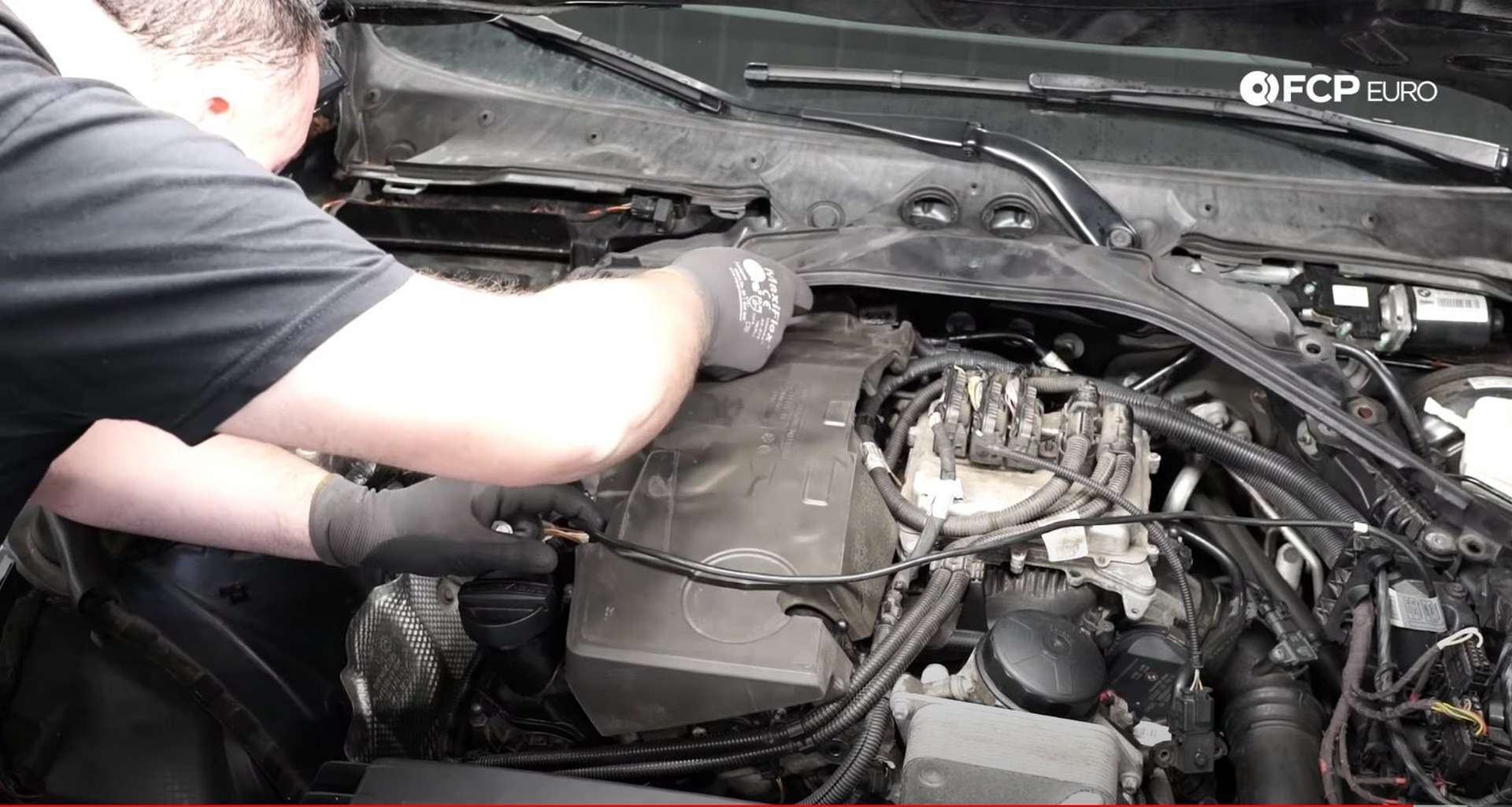
After that, install the strut tower brace. Line it up and loosely thread in all of the bolts by hand to ensure you've lined it up properly. Then, use an E18 socket to drive in and torque the bolts to 56Nm, plus 90° of rotation.
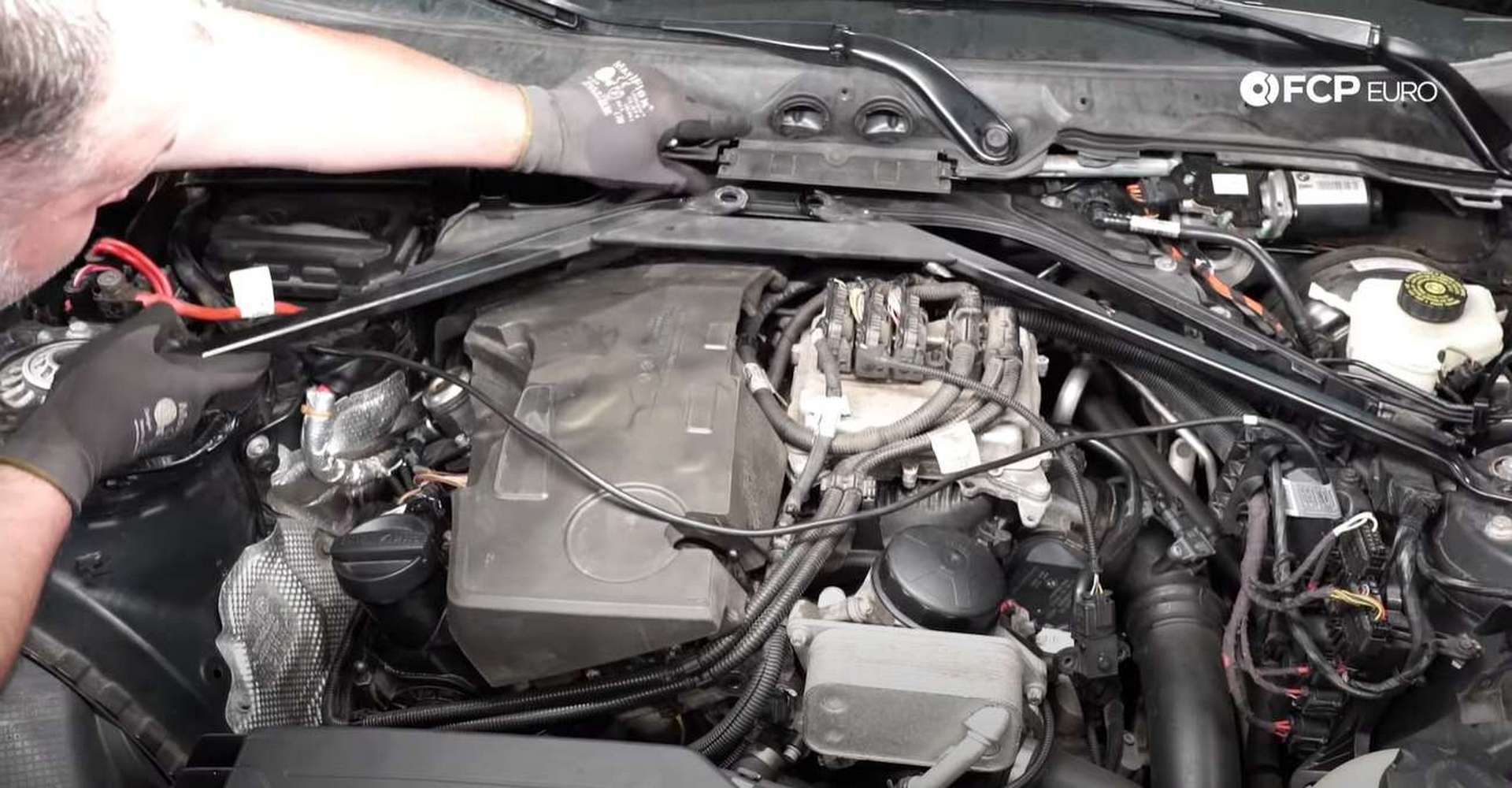
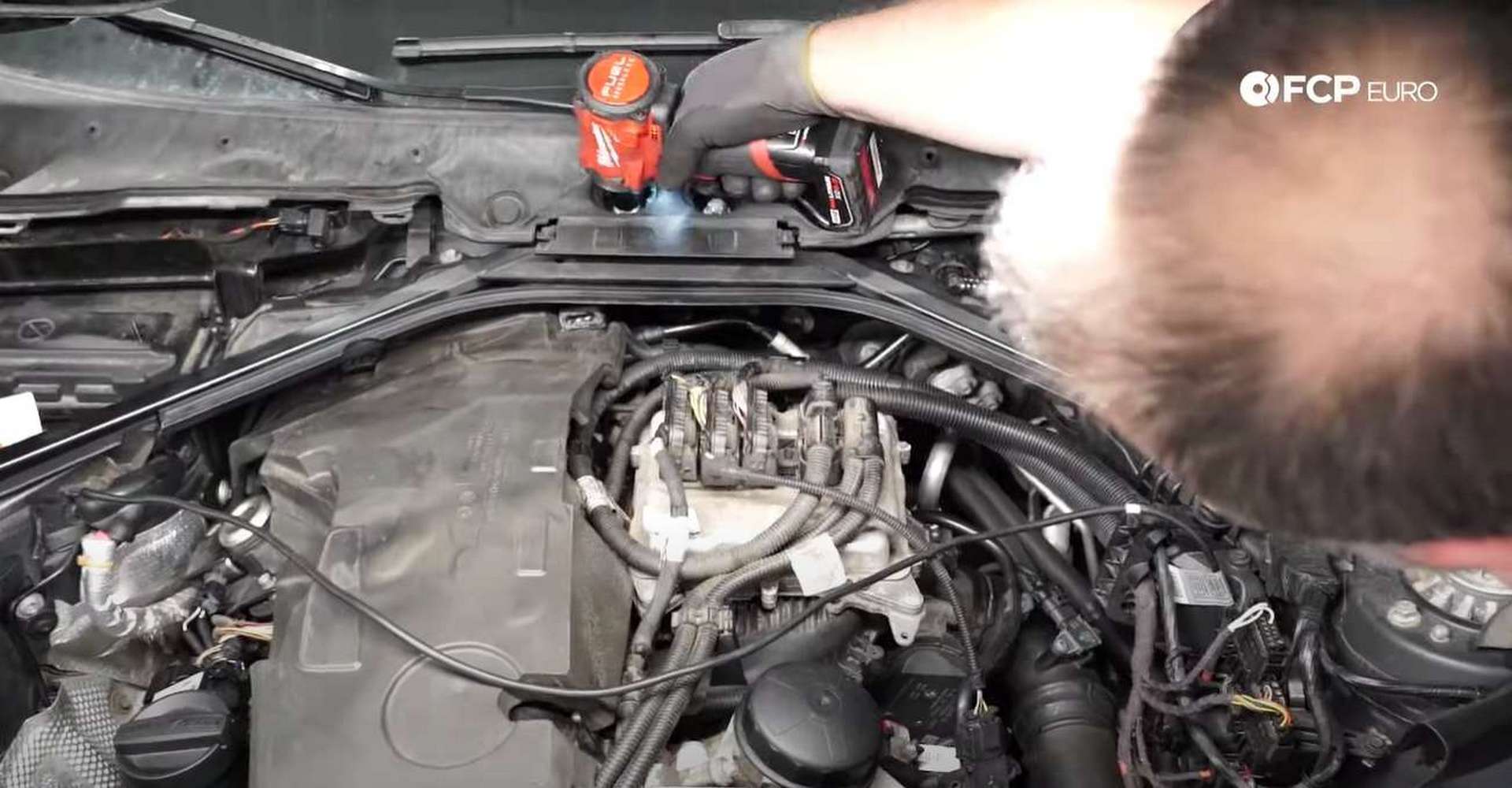
Next, reinstall the two upper cowl pieces. Slide them into place and use a 10mm socket to turn the three locks and secure the pieces to the car. Then refit the plastic rivets on their outer edges.
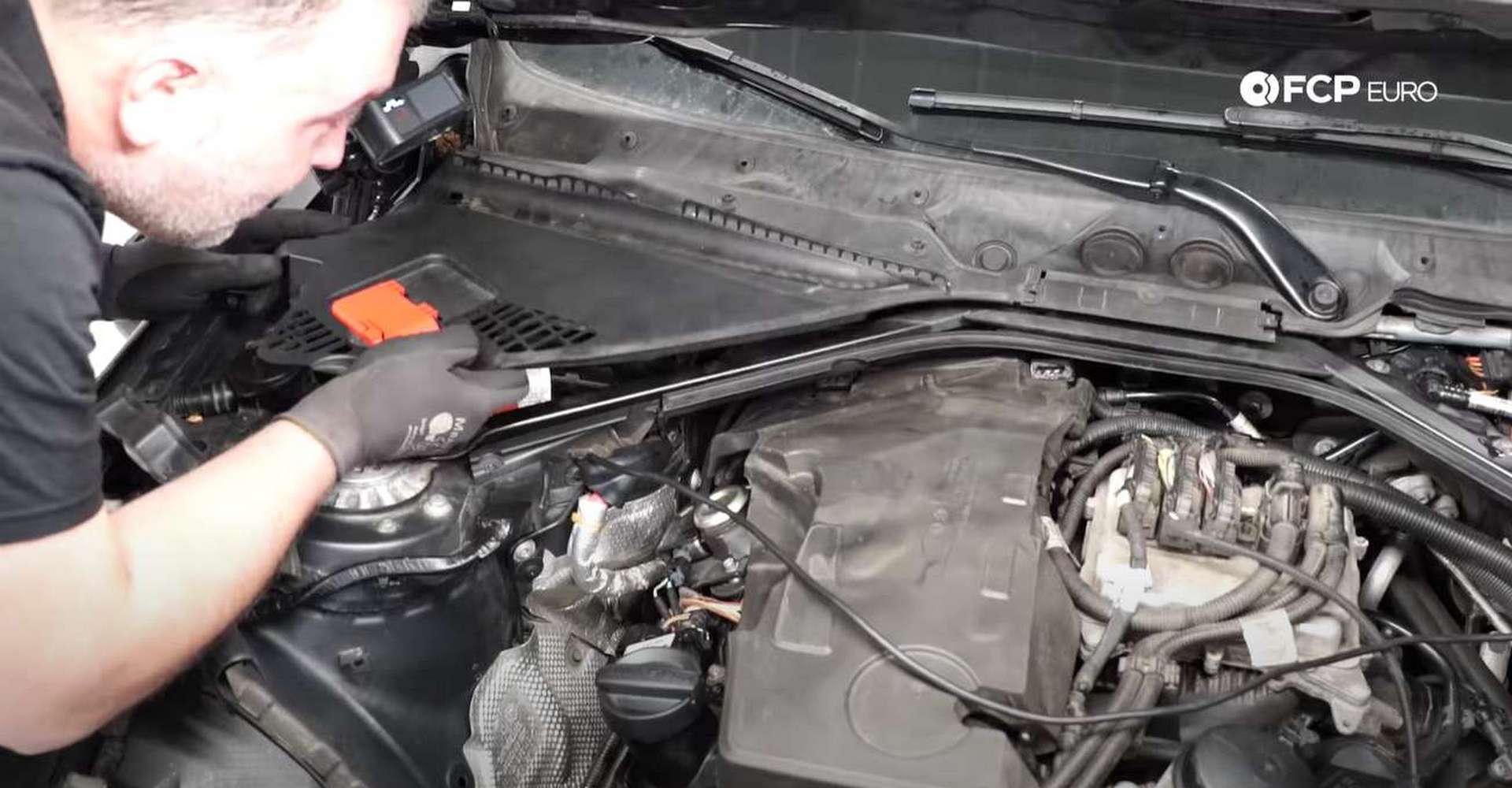
Now you can refit the hood seal to the strut brace and run the cable through it. Then, refit the rubber strut covers and secure them with their plastic rivets.
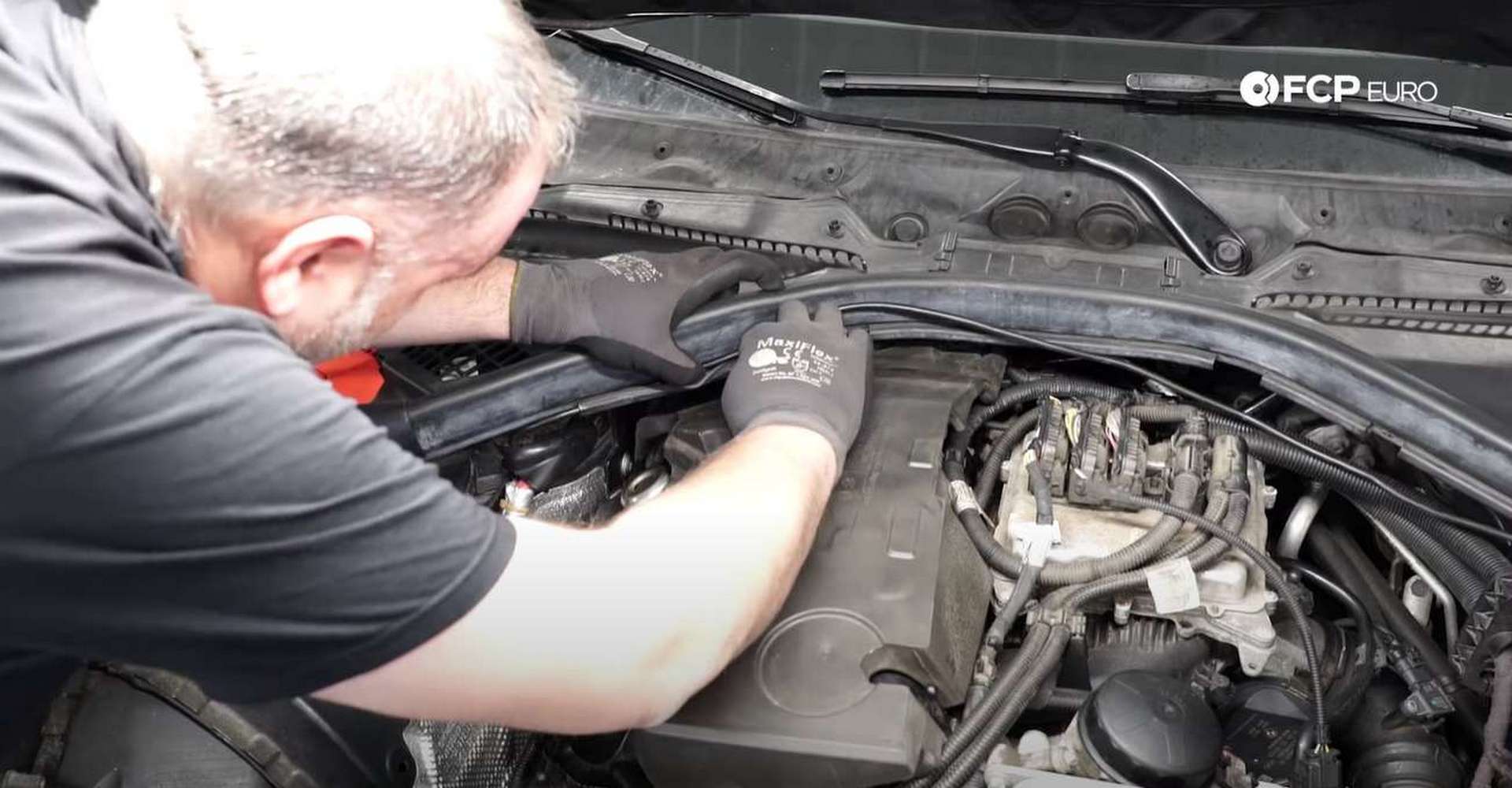
Lastly, refit the engine cover. Reconnect the vacuum lines to the cover if your engine requires it.
BMW F30 HPFP Torque Specs:
- BMW High-Pressure Fuel Pump Bolts = 12Nm or 8.6 ft-lbs, of torque
- BMW Fuel Line Fittings = 13Nm or 9.5 ft-lbs, of torque
- BMW Strut Brace Bolts = 56Nm or 41.3 ft-lbs, of torque
Replacing the high-pressure fuel pump is critical to having a properly performing engine. Now that you've replaced it yourself, you can get back to driving your BMW safely. If you're interested in more DIYs for your BMW, you can visit bmw.fcpeuro.com and subscribe to our YouTube channel.











